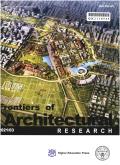在健康的城市环境中获得第三名对年轻人的神经学益处
IF 3.6
1区 艺术学
0 ARCHITECTURE
引用次数: 0
摘要
众所周知,城市环境的各个方面,尤其是绿地,有利于心理健康和福祉。然而,与更“自然”环境的充分证明的好处相比,城市第三地的治愈潜力仍未得到充分研究。“第三场所”是指人们在家中(第一名)和工作场所(第二名)之外聚集的公共场所,从而通过促进社会互动和社区参与来支持福祉。通过近红外光谱(fNIRS)、Empatica E4腕带、问卷调查和对中国上海40名年轻人的访谈,我们发现,第三个地方在神经、心理和生理上表现出与自然环境相当的治疗效果,尽管它们是通过不同的潜在机制实现的。第三个地方通过情感途径促进心理健康,主要是通过社会参与和环境设计促进“快乐”,而自然空间通过亲生物联系促进“感恩”。这些结果强调了在青年成人心理健康支持方面第三名的重要性,突出了社会基础设施干预的必要性。优化第三名可以创造更健康、压力更小、情绪更积极的城市环境。本文章由计算机程序翻译,如有差异,请以英文原文为准。
Neurological benefits of third places for young adults in healthy urban environments
Aspects of urban environments, especially green spaces, are known to benefit mental health and well-being. However, the healing potential of urban third places remains underexamined compared to the well-documented benefits of more “natural” environments. “Third places” refers to public spaces where people gather outside of their homes (first place) and workplaces (second place), thereby supporting well-being through fostering social interaction and community engagement. Using fNIRS, Empatica E4 wristbands, questionnaires and interviews with 40 young adults in Shanghai, China, we found that third places demonstrate healing effects comparable to natural environments neurologically, psychologically, and physiologically, although they are achieved through distinct underlying mechanisms. Third places contribute to mental wellbeing through emotional pathways, primarily by fostering “pleasure” through social engagement and environmental design, while natural spaces promote “gratitude” through biophilic connections. These results underscore the importance of third places in mental health support for young adults, highlighting the need for social infrastructure interventions. Optimizing third places could create healthier, less stressful, and more emotionally positive urban environments.
求助全文
通过发布文献求助,成功后即可免费获取论文全文。
去求助
来源期刊

Frontiers of Architectural Research
ARCHITECTURE-
CiteScore
6.20
自引率
2.90%
发文量
430
审稿时长
30 weeks
期刊介绍:
Frontiers of Architectural Research is an international journal that publishes original research papers, review articles, and case studies to promote rapid communication and exchange among scholars, architects, and engineers. This journal introduces and reviews significant and pioneering achievements in the field of architecture research. Subject areas include the primary branches of architecture, such as architectural design and theory, architectural science and technology, urban planning, landscaping architecture, existing building renovation, and architectural heritage conservation. The journal encourages studies based on a rigorous scientific approach and state-of-the-art technology. All published papers reflect original research works and basic theories, models, computing, and design in architecture. High-quality papers addressing the social aspects of architecture are also welcome. This journal is strictly peer-reviewed and accepts only original manuscripts submitted in English.
 求助内容:
求助内容: 应助结果提醒方式:
应助结果提醒方式:


